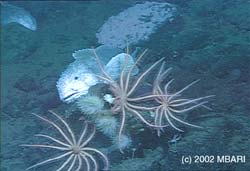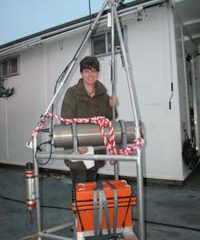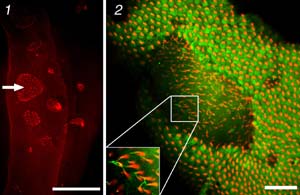Articles and reports from the Life Sciences and chemistry area deal with applied and basic research into modern biology, chemistry and human medicine.
Valuable information can be found on a range of life sciences fields including bacteriology, biochemistry, bionics, bioinformatics, biophysics, biotechnology, genetics, geobotany, human biology, marine biology, microbiology, molecular biology, cellular biology, zoology, bioinorganic chemistry, microchemistry and environmental chemistry.

Findings could influence design of anticancer and antimicrobial drugs
Chemists and biologists at Northwestern University have acquired new insight into how a specialized sensor protein, which acts as an early warning system, detects dangerous amounts of the “coinage metals” — silver, gold and copper — inside cells. For the first time, researchers can explain this important mechanism at the atomic level.
The findings, to be published Sept. 5 in the journal Science and rece

A study conducted by University of Utah genetics researchers shows that the steroid hormone ecdysone controls an important phase in the embryonic development of insects, providing an unexpected parallel with the role of the hormone in controlling metamorphosis. The study’s findings also give scientists new insights into how steroids control maturation in higher organisms.
Carl S. Thummel, Ph.D., a Howard Hughes Medical Institute investigator and professor of human genetics at the Unive

Exploring a deep-sea ridge off Northern California, scientists at the Monterey Bay Aquarium Research Institute (MBARI) have discovered a unique undersea nursery, where groups of fish and octopus brood their eggs, like chickens on their nests. This is the first time that marine biologists have directly observed any deep-sea fish brooding its eggs. It is also the first time that two different types of mobile deep-sea animals have been observed brooding together in the same area. Although the scientists

Humans may learn cooperation in kindergarten, but what about bacteria, whose behavior is preprogrammed by their DNA?
Some legume plants, which rely on beneficial soil bacteria called rhizobia that infect their roots and provide nitrogen, seem to promote cooperation by exacting a toll on those bacterial strains that don’t hold up their end of the symbiotic bargain, according to a team of researchers at the University of California, Davis.
“In the case of soybeans, it appe

Harbor Branch researcher deploying innovative camera system in Monterey Bay
Using a new lighted jellyfish lure and a unique camera system, researchers from HARBOR BRANCH are working to reveal for the first time life in the deep sea unaltered by the cacophony of sound and light that have been an integral part of most past research there. From Sept 2-5 a team will be using the lure for the first time in the dark depths of California’s Monterey Bay.
“We are hoping to do so

Purdue University biologists have learned how to control the development of stem cells in the inner ears of embryonic chickens, a discovery which could potentially improve the ability to treat human diseases that cause deafness and vertigo.
By introducing new genes into the cell nuclei, researchers instructed the embryonic cells to develop into different adult cells than they would have ordinarily. Instead of forming the tiny hairs that the inner ear uses to detect sound waves, the stem cell